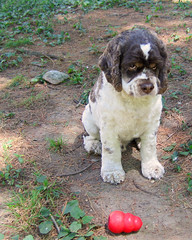
Speaking of holiday plants that are poisonous for your dog, here are 10 very useful tips from a vet on what to do in case of accidental pet poisoning. A sampling:
1-Keep the pet poison control number handy. If you live in the US, the ASPCA’s Poison Control Center is the organization most veterinarians are comfortable with. The center charges $60 per phone call (and it’s well worth it). Keep the number handy or simply bookmark the home page for easy reference.
2-If you suspect poisoning from a specific substance, pick up the remnants of the toxin, the box, the bottle and anything associated with it. Keep this “evidence” handy so you can answer your veterinarian or poison control’s detailed questions.
3-Attempt to ascertain how much of the substance could have been ingested. Think worst-case scenario for safety’s sake.
[...]
6-NEVER induce vomiting or administer home remedies for poisonings without talking to a trained individual first. I’ve seen seizuring pets die from ill-advised milk and oil administration. Caustic compounds can damage sensitive anatomic structures on their way back up. It’s best to let a professional do these things—or at least walk you through them.
[...]
8-When you’ve determined that the poison your pet ingested requires veterinary attention, my preferred approach—whether it be Tylenol, plants or toilet bowl cleaner—is to open up a file with the ASPCA’s Poison Control Center. You can do this on your way to the hospital (or when you called to determine whether the toxin required medical attention).
(This service costs no more than the $60 phone call. Whether the poison control’s toxicologists need to be in constant contact with your vet for two weeks or tell you your pet will be fine, the fee is the same.)
Poison control will advise your veterinarian as to the best course of treatment: induce vomiting or not, fluids or not, charcoal or not, antidotes, labwork, surgery, etc. I cannot say enough about the value of this service. There’s no better way to treat a poisoning patient than by the poison control’s books, IMO.
Interestingly, this is something not every vet knows about. But YOU can take control of your pet’s care by initiating this clinical interaction. I think it’s especially helpful when sending my patients to the ER. I know they’ll get great care when the poison control’s on the line.




